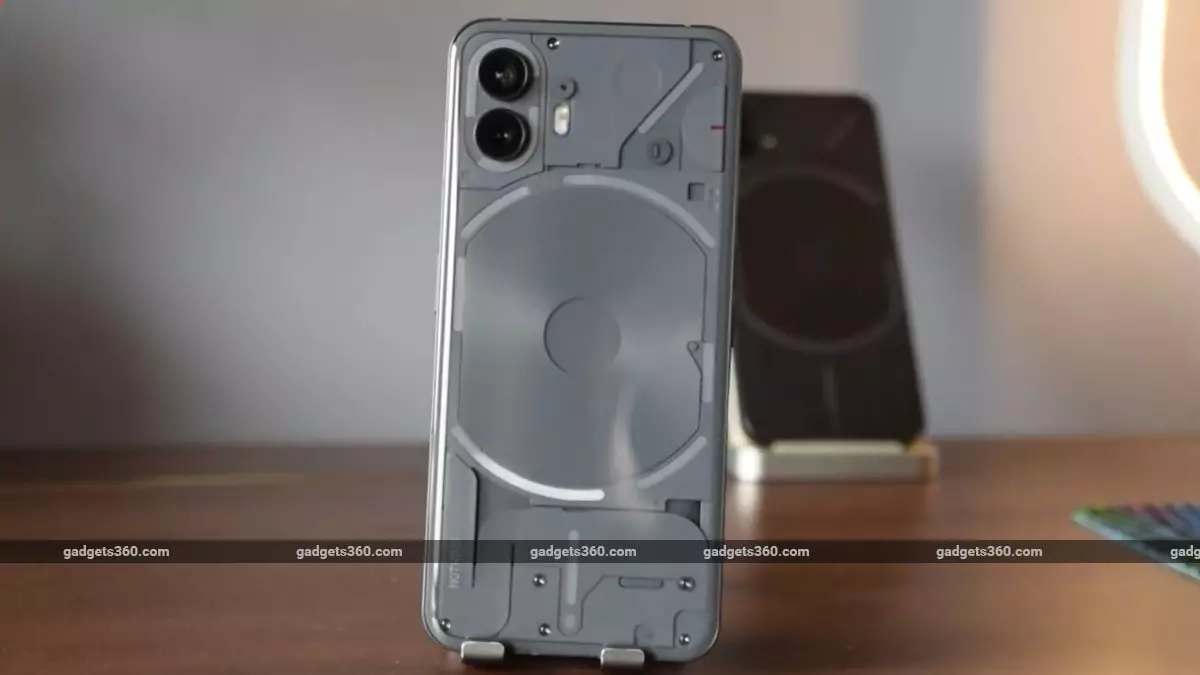The Nothing Phone 3 is finally set to launch amidst much fanfare, with the UK-based startup branding it as their “first true flagship smartphone.” Yet, as we inch closer to the unveiling, one cannot help but question whether this device truly justifies the skyrocketing price tag or if it’s merely an ambitious marketing gamble. With the expected price hovering around £800 (roughly ₹90,000 in India), it represents nearly double the cost of its predecessor, the Nothing Phone 2, which started at a more reasonable ₹44,999. While companies often raise prices with each generation, the Nothing Phone 3’s steep increase feels more like a leap into the realm of premium players rather than a natural progression. This pricing strategy may alienate the brand’s loyal customer base who appreciated its disruptive entry into the mid-range segment.
Design Evolution: Innovation or Cosmetic Facelift?
One of Nothing’s signature features was its distinctive Glyph Interface—a light-based communication method on the phone’s rear. The Phone 3 is set to replace this with a new “Glyph Matrix,” a move that excites some but leaves others wondering if this is genuine innovation or just a trendy rebranding exercise. While the gimmick undoubtedly adds character and aligns with Nothing’s zest for design, it remains uncertain how much practical utility this will offer beyond aesthetic appeal. In an era where phone design risks becoming increasingly homogenous, Nothing’s effort to differentiate itself is commendable, but it must transcend mere novelty to truly matter.
Specs vs. Substance: The Hardware Breakdown
On the hardware front, the Nothing Phone 3 appears poised to deliver a significant uplift. The rumored 6.7-inch LTPO OLED screen boasting a 1.5K resolution and a smooth 120Hz refresh rate certainly ticks the boxes for display enthusiasts. The camera setup also reads like a serious flagship contender—headlined by a 50MP periscope telephoto lens with 3x optical zoom, coupled with a 50MP main sensor and a 50MP ultra-wide lens. This trio on paper suggests stellar photography potential, but as history shows, pixel count alone isn’t the definitive factor—integration and software optimization ultimately dictate camera quality.
The device’s heartbeat will be Qualcomm’s Snapdragon 8s Gen 4 chipset, promising a remarkable 36% leap in CPU performance, an 88% jump in GPU prowess, and a 60% boost in neural processing abilities compared to the Phone 2. These figures sound impressive, yet they beg the question: is the incremental performance bump worth the premium cost hike? Furthermore, the inclusion of five years of Android updates and seven years of security patches is a praiseworthy commitment—indicative of sustained software longevity that many competitors struggle to match.
Battery and Charging: Practicality Meets Expectations
Battery life remains a decisive factor for any flagship, and here the Nothing Phone 3 appears to play it safely with a 5,150mAh capacity—modest but adequate given the power-hungry hardware. The addition of 100W wired fast charging support is a welcome evolution, drastically reducing downtime. Additionally, wireless and reverse wireless charging capabilities suggest an all-rounder approach to charging solutions, aligning with other premium devices in the market. Yet, as futuristic as these features sound, the everyday user often wonders how these specs translate into real-world endurance and reliability.
Looking Beyond the Buzz: What This Means for the Market
Nothing’s journey has always straddled the line between innovation and theatrics. The Phone 3 launch is not just about hardware; it symbolizes the brand’s ambition to step firmly into the high-end arena dominated by Apple, Samsung, and others. However, this ambition carries risks—not least the alienation of budget-conscious buyers who admired Nothing’s earlier blend of quirky design and accessible pricing.
In a fiercely competitive smartphone landscape where incremental upgrades have become the norm, Nothing Phone 3’s bold promises must translate into palpable user benefits rather than glossy specs. The shrinking margin between mid-range and truly flagship devices means that consumers will expect more than novelty—they’ll seek meaningful advancements that justify paying twice as much.
While the hype and specs provide an exciting framework, the ultimate yardstick will be how well Nothing balances innovation, price, and user experience. The Phone 3 could set a new benchmark for indie smartphone makers, or it might serve as a cautionary tale on the perils of overpricing without distinct advantage. For now, the ball is in Nothing’s court to prove that its flagship lives up to the powerful narrative it is building.

Leave a Reply